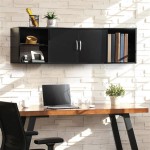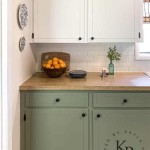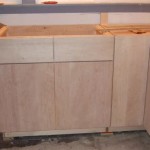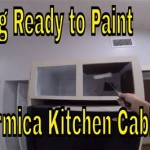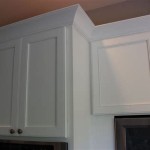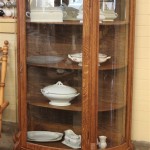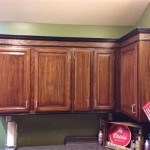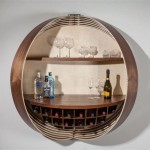How To Paint Over Painted Cabinets: A Comprehensive Guide
Painting kitchen cabinets is a popular and economical way to refresh the look of a home without undertaking a full-scale renovation. However, successfully painting over previously painted cabinets requires careful preparation and execution. Simply applying a new coat of paint over an existing surface can lead to peeling, chipping, and an overall unprofessional appearance. This article provides a detailed, step-by-step guide on how to properly paint over painted cabinets, ensuring a durable and aesthetically pleasing result.
Key Point 1: Meticulous Preparation is Paramount
The foundation of a successful cabinet painting project lies in thorough preparation. This stage is more time-consuming than the actual painting, but it is absolutely crucial for ensuring proper adhesion and a smooth, lasting finish. Neglecting proper preparation will almost always result in paint failure down the line.
1. Removal and Labeling: Begin by removing all cabinet doors and drawers. This allows for easier access to all surfaces and prevents drips or uneven coverage. Before removing the doors, clearly label each one and its corresponding cabinet frame opening. Use painter's tape and a permanent marker to assign a unique number or letter to each door and frame. This will save considerable time and frustration during reinstallation.
2. Hardware Removal: Remove all hardware, including hinges, knobs, pulls, and any other decorative elements. Store these items in a safe place, and consider replacing them with new hardware for a more updated look. If you plan to reuse the existing hardware, clean it thoroughly to remove any grease or grime.
3. Cleaning: Thoroughly clean all cabinet surfaces to remove grease, dirt, and any other contaminants. Kitchen cabinets are particularly prone to grease buildup, which can prevent paint from adhering properly. Use a degreasing cleaner specifically designed for kitchen surfaces. TSP (trisodium phosphate) is a traditional option, but be aware of safety precautions and local regulations regarding its use. Alternatively, a phosphate-free cleaner and degreaser can be used. Apply the cleaner according to the manufacturer's instructions, scrubbing all surfaces with a non-abrasive sponge or cloth. Rinse thoroughly with clean water and allow the cabinets to dry completely.
4. Sanding: Sanding is a critical step in preparing previously painted cabinets. It creates a slightly textured surface that allows the new paint to grip effectively. Use a medium-grit sandpaper (around 120-180 grit) to lightly sand all surfaces, paying particular attention to glossy or slick areas. The goal is not to remove the existing paint entirely, but rather to scuff it up enough to improve adhesion. After sanding, use a tack cloth or a damp cloth to remove all sanding dust. This is essential for preventing the dust from becoming embedded in the new paint finish.
5. Repairing Imperfections: Inspect the cabinets for any dents, scratches, or chips. Fill these imperfections with wood filler, following the manufacturer's instructions. Allow the wood filler to dry completely, and then sand it smooth to blend seamlessly with the surrounding surface. Remove any dust from the filled areas before proceeding.
6. Masking: Protect surrounding areas from paint splatters and drips by masking off countertops, walls, floors, and appliances. Use painter's tape to create clean lines around these areas. Cover larger surfaces with drop cloths or plastic sheeting.
Key Point 2: Priming for Optimal Adhesion and Finish
Priming is an often-underestimated step that is crucial for achieving a professional-looking and long-lasting paint job. Primer provides a consistent base for the paint, seals any remaining imperfections, and ensures optimal adhesion, especially on surfaces that have already been painted.
1. Choosing the Right Primer: Select a high-quality primer specifically designed for use on cabinets. An adhesion-promoting primer is recommended for previously painted surfaces. These primers contain additives that enhance the bond between the existing paint and the new topcoat. Oil-based primers are generally more durable and offer better stain blocking properties, but they require more involved cleanup and emit stronger odors. Water-based (latex) primers are easier to clean up and have lower VOCs, but they may not be as effective at blocking stains or providing a smooth surface. Consider the existing paint type and the desired finish when choosing a primer.
2. Applying the Primer: Apply the primer in thin, even coats using a high-quality brush or roller. For recessed areas and intricate details, a brush is often the best choice. For larger, flat surfaces, a roller will provide more even coverage. Avoid applying the primer too thickly, as this can lead to drips and runs. Allow the primer to dry completely according to the manufacturer's instructions. Depending on the primer and the ambient conditions, drying time can range from a few hours to overnight.
3. Light Sanding After Priming: Once the primer is dry, lightly sand it with a fine-grit sandpaper (around 220-grit) to smooth out any imperfections and further improve adhesion. This step is particularly important if the primer has a slightly textured finish. Remove all sanding dust with a tack cloth before proceeding to the painting stage.
Key Point 3: Paint Application Techniques for a Professional Result
The final step, applying the paint, requires careful attention to detail and proper technique to achieve a smooth, even, and durable finish. Choosing the right paint and applying it correctly will significantly impact the overall aesthetic and longevity of the painted cabinets.
1. Selecting the Right Paint: Choose a high-quality paint specifically formulated for cabinets and furniture. Alkyd (oil-based) paints are known for their durability and smooth finish, but they require mineral spirits for cleanup and emit strong odors. Acrylic (water-based) paints are easier to clean up and have lower VOCs, making them a more environmentally friendly option. Consider using a paint specifically formulated as an "acrylic enamel" which offers enhanced durability and a harder finish compared to standard acrylic paints. A satin or semi-gloss sheen is generally recommended for kitchen cabinets, as these finishes are durable, easy to clean, and resist moisture.
2. Applying the Paint: Apply the paint in thin, even coats using a high-quality brush, roller, or sprayer. A brush is ideal for cutting in around edges and painting recessed areas. A roller with a short nap (1/4 inch or less) is best for painting larger, flat surfaces. A sprayer can provide the smoothest finish, but it requires more skill and preparation. Regardless of the application method, avoid applying the paint too thickly, as this can lead to drips, runs, and an uneven finish. Work in long, even strokes, overlapping each stroke slightly to ensure complete coverage. Allow the first coat of paint to dry completely according to the manufacturer's instructions.
3. Light Sanding Between Coats: After the first coat of paint is dry, lightly sand it with a fine-grit sandpaper (around 320-grit) to smooth out any imperfections and create a better surface for the second coat. This step is crucial for achieving a professional-looking finish. Remove all sanding dust with a tack cloth before applying the second coat of paint.
4. Applying the Second Coat: Apply a second coat of paint using the same technique as the first coat. This will provide full coverage and enhance the durability of the finish. Allow the second coat to dry completely according to the manufacturer's instructions. For optimal durability, consider applying a third coat of paint, especially in high-traffic areas.
5. Curing Time: Allow the painted cabinets to cure completely before reinstalling the hardware and reattaching the doors. Curing time can vary depending on the paint type and the ambient conditions, but it typically takes several days or even a week for the paint to fully harden. Avoid exposing the painted cabinets to moisture or excessive wear during the curing process.
6. Reassembly: Once the paint has fully cured, carefully reattach the hardware and reinstall the cabinet doors and drawers, using the labels you created during the removal process. Adjust the hinges as needed to ensure that the doors align properly and swing smoothly.
By following these steps carefully, homeowners can successfully paint over painted cabinets and achieve a professional-looking, durable finish that will enhance the beauty and value of their home.

Avoid These Mistakes How To Paint Cabinets That Are Already Painted Grace In My Space

Do It Yourself Divas Diy How To Paint Over Red Painted Cabinets Walls

How To Repaint Kitchen Cabinets Painted By Kayla Payne

Do It Yourself Divas Diy How To Paint Over Red Painted Cabinets Walls

How To Paint Kitchen Cabinets A Step By Guide Confessions Of Serial Do It Yourselfer

How To Paint Veneer Cabinets For A Long Lasting Finish Anika S Diy Life

How To Paint Kitchen Cabinets The Love Notes Blog

The Right Way To Paint Your Kitchen Cabinets And Save Factory Finish Guaranteed Emily Henderson

Painted Kitchen Cabinets One Year Later The Palette Muse

Tips On How To Paint Kitchen Cabinets Cherished Bliss
Related Posts

